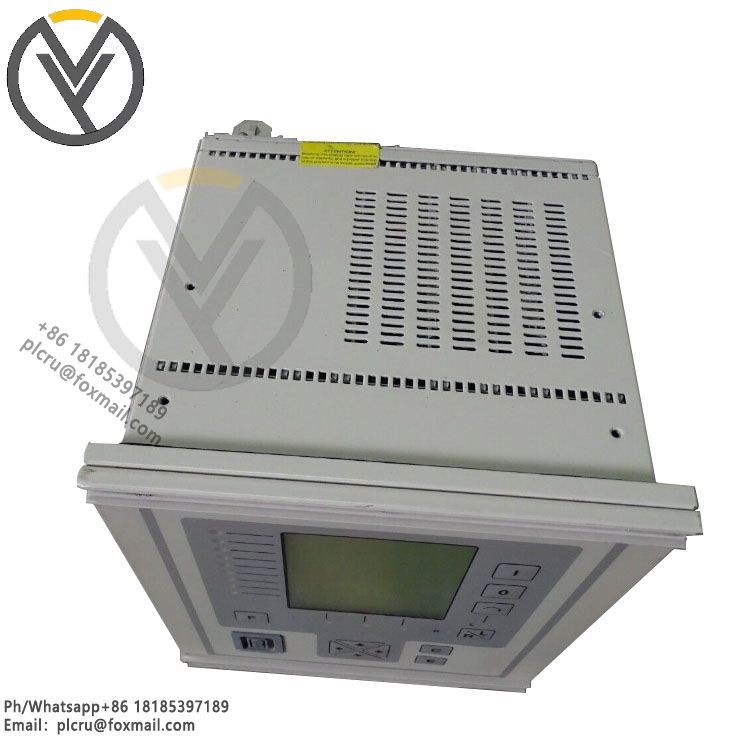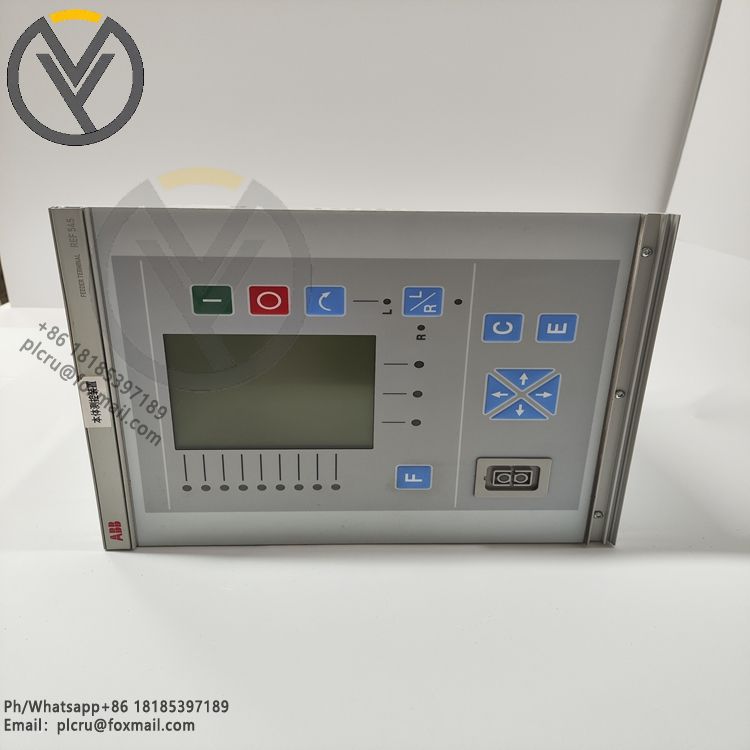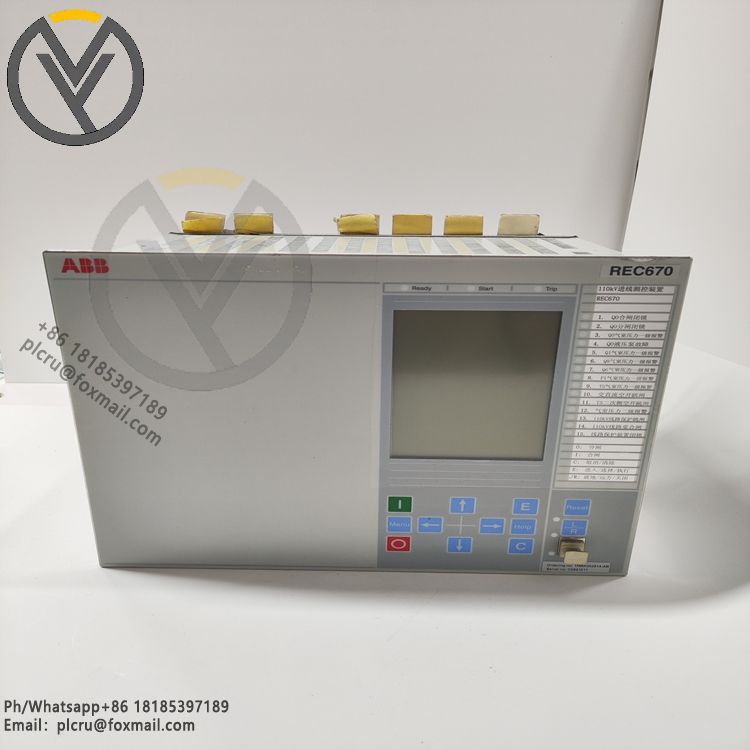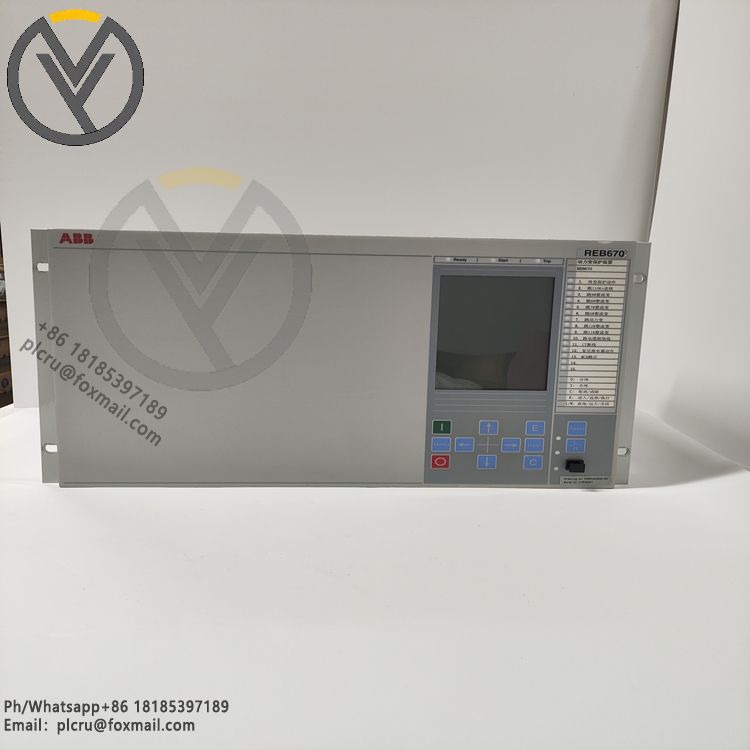
ABB REF542PLUS 1VCR007346 Feeder Terminal
Delivery time 3 days
Product origin New/used
Email plcru@foxmail.com
Mobile/wechat /WhatsApp +86 18185397189
ABB REF542PLUS 1VCR007346 Feeder TerminalProduct Positioning and UseSeries: REF5
ABB REF542PLUS 1VCR007346 Feeder Terminal
Product Positioning and Use
Series: REF542PLUS is a high-performance digital protection, control and measurement device launched by ABB, suitable for protection, monitoring and automatic control of feeders, transformers, motors and other equipment in medium and low voltage power systems (such as 110kV and below).
Model Analysis:
1VCR007346 is a specific model in the REF542PLUS series, which may correspond to specific hardware configurations (such as the number of input and output channels, communication interface type, etc.).
Core Functions:
Protection function: Integrates multiple protection algorithms (such as overcurrent protection, zero-sequence protection, distance protection, differential protection, etc.), can quickly detect faults and perform tripping or alarms.
Measurement and Monitoring: Real-time monitoring of electrical parameters such as current, voltage, power, frequency, etc., supports harmonic analysis and power quality monitoring.
Control and Automation: Supports circuit breaker opening and closing control, anti-tripping function, and synchronous detection, and can communicate with the SCADA system for remote monitoring.
Communication interface: Usually equipped with Ethernet (IEC 61850), RS485 (Modbus) and other interfaces, supporting digital substation and smart grid integration.
Technical characteristics
The following are typical technical parameters of the REF542PLUS series (specific details are subject to the 1VCR007346 manual):
Electrical parameters
Rated voltage:
AC voltage: 100V/√3 (phase voltage), 100V (line voltage), etc., supporting different system grounding methods (neutral point grounding, ungrounded, etc.).
DC operating power supply: 24V DC, 110V DC, 220V DC (configured according to the model).
Rated current: 5A or 1A (CT secondary input).
Measurement accuracy: voltage/current measurement error ≤0.2%, power error ≤0.5%.
Protection function
Main protection: three-stage overcurrent protection, zero-sequence overcurrent protection, direction protection, distance protection (impedance measurement), etc.
Backup protection: overload protection, low voltage protection, overvoltage protection, frequency protection, etc.
Special functions: adaptive reclosing, fault recording (SOE, event sequence recording), fault distance measurement.
Input and output (I/O)
Digital input (DI): usually supports 16-32 programmable DIs for collecting switch status, button signals, etc.
Digital output (DO): 8-16 relay outputs for controlling circuit breakers, alarm signals, etc.
Analog input (AI): supports 4-8 voltage/current analog inputs (such as PT/CT signals).
Communication and protocol
Standard protocols: IEC 61850 (GOOSE/SV), Modbus RTU/TCP, DNP3, etc.
Communication interface: dual Ethernet ports (support IEEE 1588 timing), RS485 serial port, some models support optical fiber interface.
Environmental characteristics
Working temperature: -25°C ~ +70°C (wide temperature design, suitable for harsh industrial environments).
Protection level: IP54 (panel)/IP20 (inside the cabinet), anti-vibration, electromagnetic interference (compliant with IEC 61000 standard).
Application scenarios
Power system:
Substation feeder protection and automation (such as 10kV/35kV outgoing line control).
Distribution network automation (DA), support fault location, isolation and restoration (FLISR).
Industrial field:
Power supply system protection and monitoring of large factories and mines.
Grid-connected protection device for renewable energy (such as photovoltaic and wind power).
Selection and matching
Supporting equipment:
Need to match CT/PT (current/voltage transformer), circuit breaker, operating mechanism and other primary equipment.
Can be integrated with ABB's PCM600 series human-machine interface (HMI) and PM800 series instrument.
Selection considerations:
Confirm the protection function configuration (such as whether distance protection and differential protection are required).
Check whether the number of I/O points meets the site requirements (such as the number of DI/DO and the number of analog channels).
The communication protocol must be compatible with the upper system (such as SCADA).






